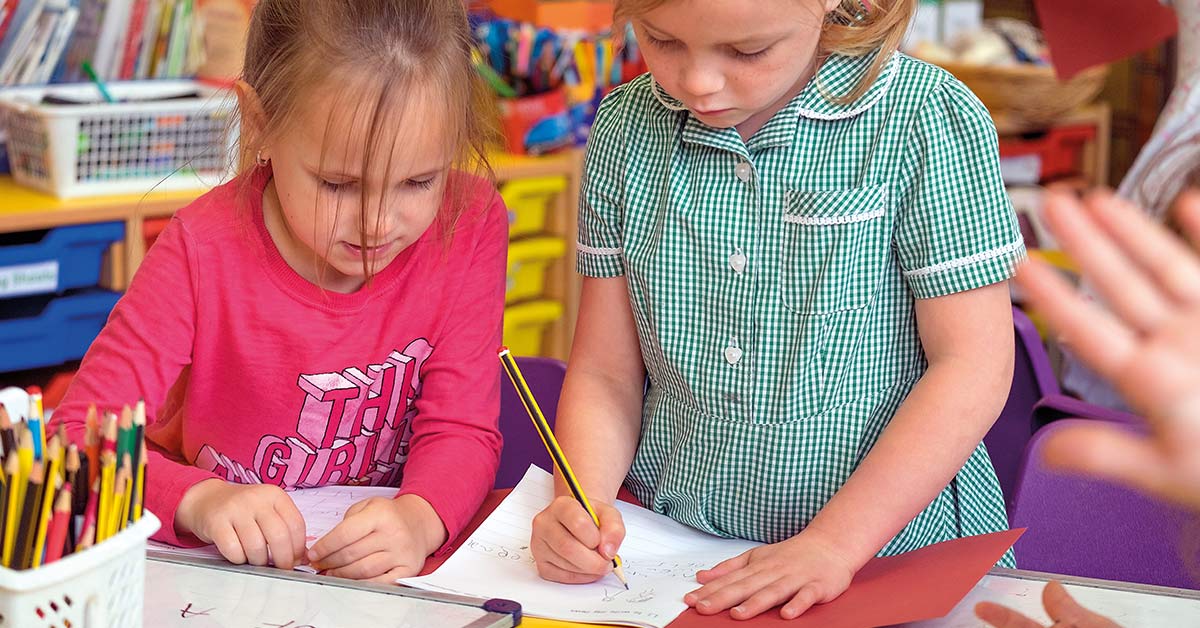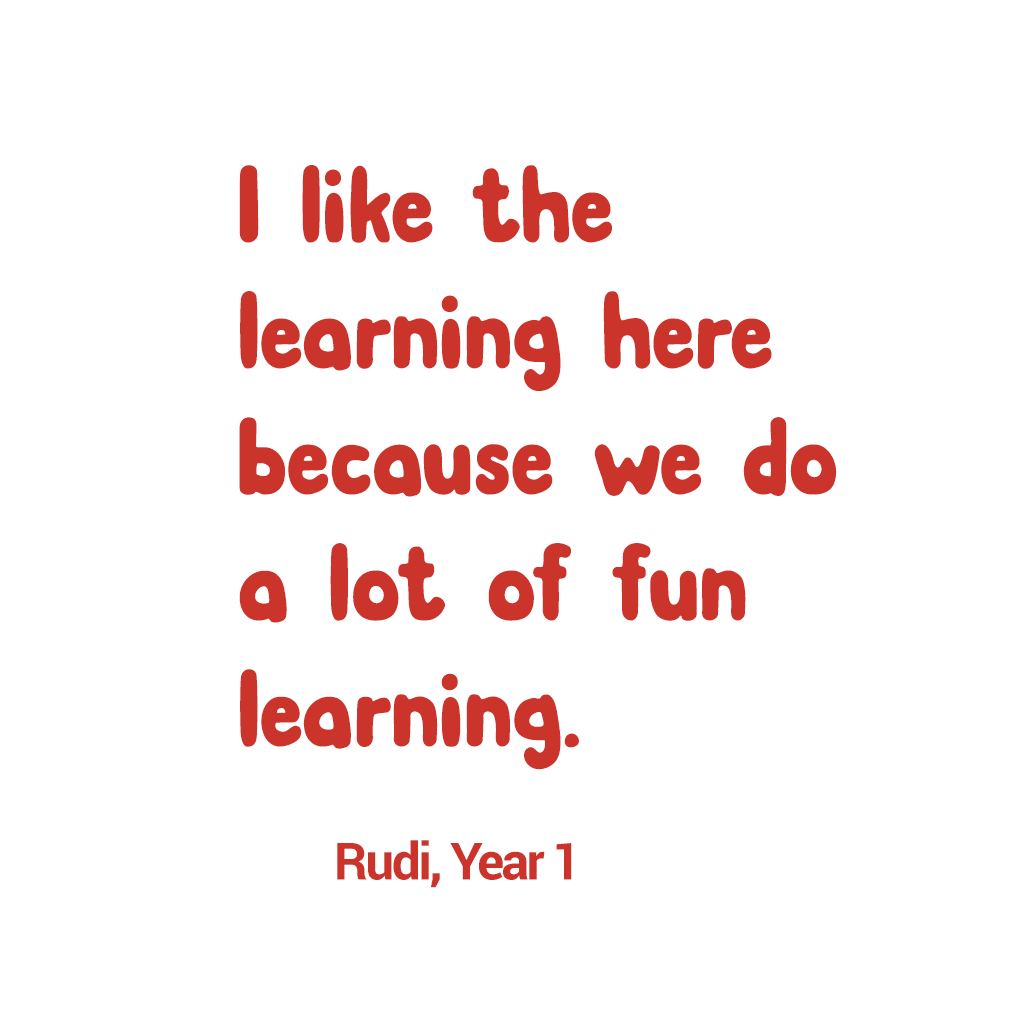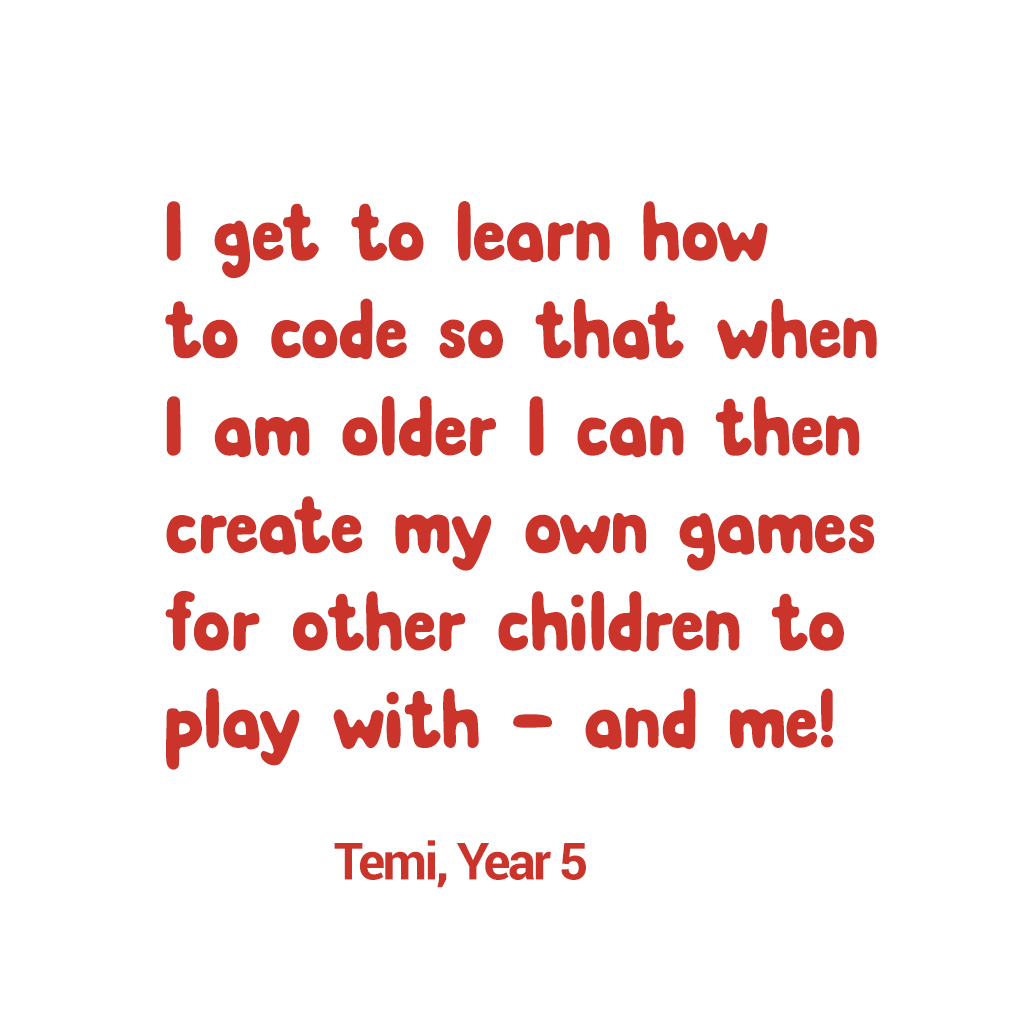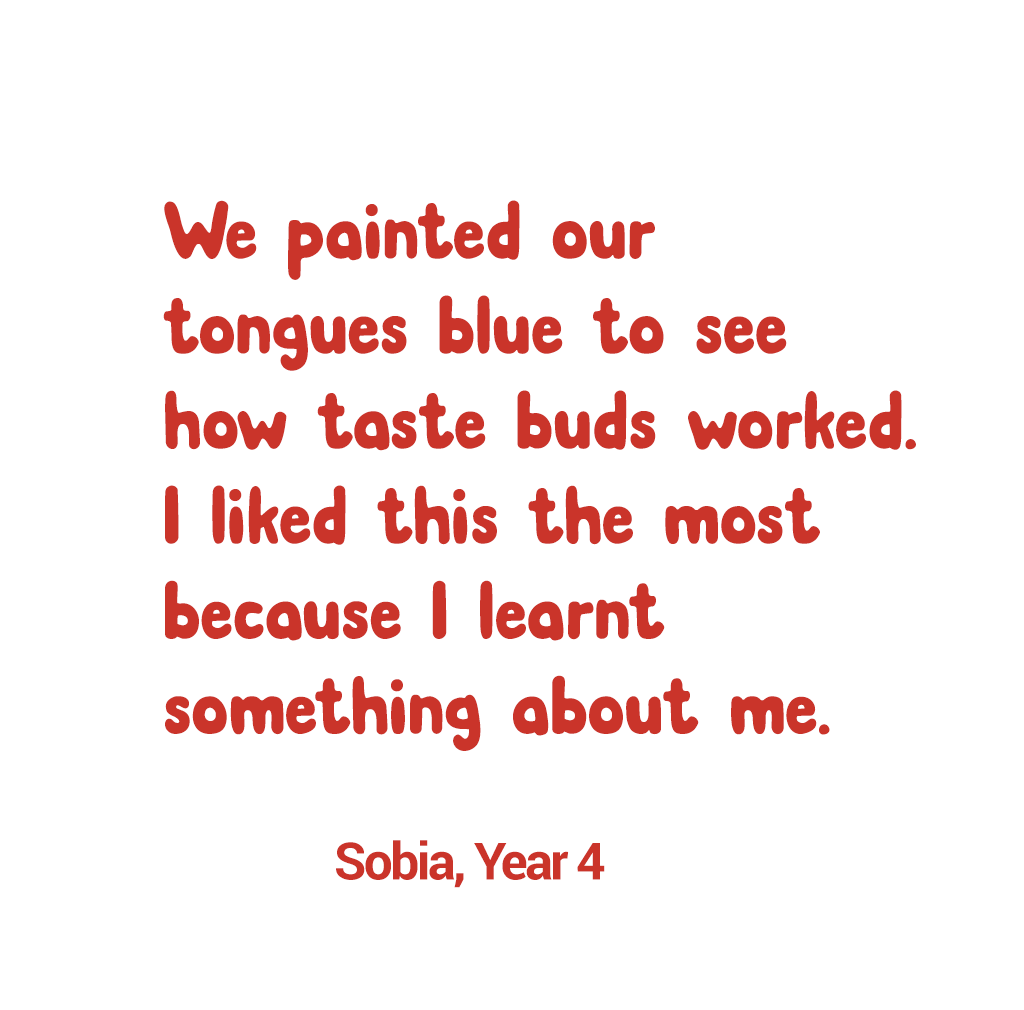
English

In English in the Autumn Term the children study short texts linked to the weather such as ‘The Storm Whale.’
They will use these as a stimulus to write for different purposes including writing a post card from their adventure with the whale, sending a letter to someone out at sea and writing a poem in the shape of a thunder cloud.
The children then study the adventure story ‘George and the Dragon’. They explore exciting vocabulary to create a character description and missing poster of the dragon before creating their own version of ‘The Hungry Dragon’ story. The children then explore the features of non-fiction texts to create an information booklet about Motte and Bailey Castles.
In the Spring Term, the children study ‘The Last Stop on Market Street’ before writing a recount of their own journey to school using time connectives to sequence their text. The texts which follow then link to different continents as the children journey around the world.
For example, when they visit Africa the writing is inspired by ‘The Leopard’s Drum’ and they explore a range of different writing genres including instructions, letters, postcards and poetry. They children then respond to the picture book ‘The Journey’ by Aaron Becker and use this as a stimulus for creative writing.
In the Summer Term, the children study ‘Harry the Poisonous Centipede’ as a class and create character descriptions and warning posters to link to the story. They develop their non-fiction writing to create an information text about insects including using subheadings as an organisational feature.
As we move into the final half term, the children study ‘Traction Man’. They role play the story and create freeze frames of different scenes. They develop their own ending to the story before publishing this as both a story as well as a comic strip.
For the Grammar, Punctuation and Spelling content covered in Year 2, please click on the English link for more details.
Maths
The year begins by looking at place value, building on work from Year 1. Children recognise the place value of two digit numbers and represent these in different ways. The children learn to count in steps of 2, 3, 5 and 10 from any number, counting forwards and backwards.
The children move on to addition and subtraction where they recall number bonds to 10 and 20 as well as deriving related facts. They explore addition and subtraction using concrete resources, pictorial representations and mentally. The children explore the inverse and use the relationship between addition and subtraction and use this to check calculations and solve missing number problems.
The children end Autumn Term looking at money. This involves recognising and adding coins to make different amounts before using these skills to find change.
In the Spring Term the children build on their understanding of equal groups to support them in understanding multiplication and division.
They write and calculate mathematical statements involving these operations as well as recognising even and odd numbers.

The children then look at statistics where they interpret and construct simple pictograms, tally charts, block diagrams and simple tables. They ask and answer simple questions by counting the number of objects in each category and sorting the categories by quantity.
The Year 2 children then move onto shape where they identify and describe the properties of 2D shapes and 3D shapes before finishing Spring Term by exploring fractions. They will halve and quarter shapes and use the bar model to find a fraction of a number.
In the Summer Term the children look at different aspects of measurement. They look at telling the time on an analogue clock, finding the length of different objects, weighing a range of objects and finally exploring capacity.
They also learn about positional and directional language to describe the turns and movement of different objects. They finish Year 2 by looking at a range of problem solving and investigation tasks which encourage them to draw on the mathematical skills they have developed so far.
Science
In Year 2 the children study the following units:
Everyday materials: In this topic in the Autumn Term the children look at a range of everyday materials and compare their suitability for different uses. They will discover how the shape of some solids can be changed by bending, stretching, squashing and scrunching.
Living Things in their Habitats: In this Spring Term topic the children explore and compare the differences between things that are living, dead, and things that have never been alive. They identify that most living things live in habitats which they are suited to. They will describe how different habitats provide for the basic needs of different kinds of animals and plants and think about how they depend on each other.
Plants and Microhabitats: The focus of this unit in the Summer Term is to learn about how seeds and bulbs grow into mature plants. Children will discover and describe how plants need water, light and a suitable temperature to grow and stay healthy. They will identify and name a variety of plants and animals in their habitats, including micro-habitats.
Animals (including humans): The focus of this unit in the Summer Term is to learn about how animals, including humans, have offspring which grow into adults. Children will find out about and describe the basic needs of animals, including humans, for survival. Finally, they will the discuss the importance for humans of exercise, eating the right amounts of different types of food, and hygiene.
Topics
Autumn Term 1: Singing in the Rain
At the start of the year, the children work on a topic about the weather. They learn about the daily and seasonal weather patterns of the UK, including the British seasons before exploring world geography and looking at the different climate zones.
They explore extreme weather types and create their own tornado in a jar! Throughout the topic, children think about their favourite types of weather as well as the effect that different weather can have on the world.
Autumn Term 2: King of the Castle
This topic encourages the children to look back in history and how things have changed. They learn about The Battle of Hastings and the very first castles to be built. They explore different parts of a castle before using this knowledge to create their own castle model.
They will develop their map skills further by using an atlas to locate castles on a UK map and discuss why these locations were suitable.
They will learn about castle life through experiencing a medieval banquet with dancing, food and jousting as part of the event!
Spring Term: School Days, followed by Off We Go!
This topic further develops children’s geography skills. They develop their mapping skills to show their journey to school before learning about the history of the school and how it has changed over time.
The children learn the names of the seven continents and five oceans and spend time exploring aspects from each of the continents: from exploring different foods from Europe in a food tasting afternoon, to learning about the richness and diversity of the African continent.
The children will create a detailed comparison between Asia and the UK, thinking about the similarities and differences between the continents.
They finally learn about the famous explorer Christopher Columbus and discover the journey that he took.
Summer Term 1: A Bug’s Life!
The first topic of the Summer Term links closely to science where the children will enjoy searching for mini beasts in their micro habitats.
They will look at the plants and mini beasts in each habitat and think about what each living thing needs in order to survive.
They will use their research into mini beasts to help them in creating their own mini beast clay model and mini beast puppet, thinking about their different body parts.
Summer Term 2: I need a Hero
The final topic of Year 2 allows children time to think about heroes in their community and people who help them.
They will then look back at heroes throughout history including Mary Seacole, Florence Nightingale, Martin Luther King and Rosa Parks and explore a range of sporting heroes including Serena Williams, Marcus Rashford, Tanni Grey-Thompson and Colin Kaepernick.
Children will discover what these people achieved in their lives, why they are famous and think about how they have impacted our lives today.




